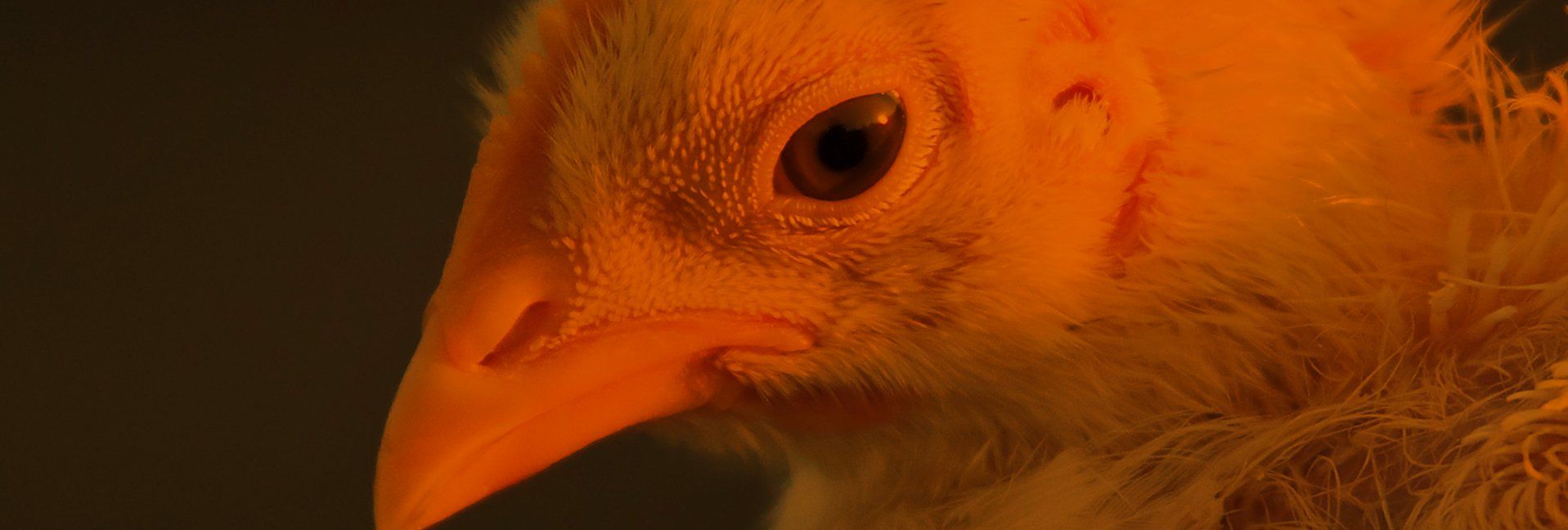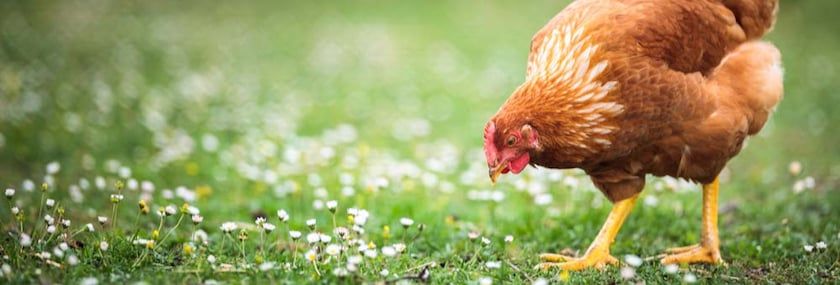From Jungle to Barn
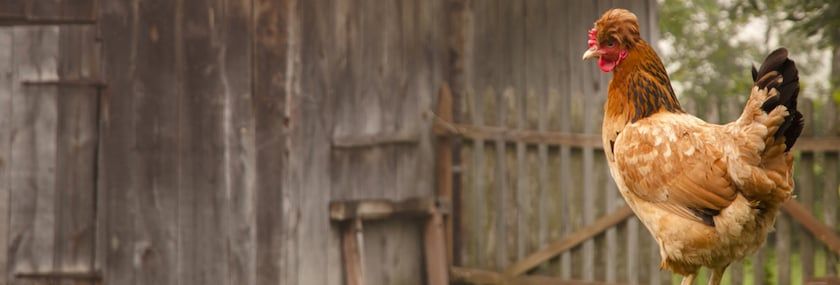

The incredible story of the humble chicken
Chickens by far are the most numerous and geographically distributed domestic animal on earth and are of immense importance as a global food species. They can be found everywhere, from remote islands in the Pacific, the edges, tips and centers of the continents, on farms, cities and of course even in our backyards.
As poultry owners, we spend so much time reading about how to raise, protect, feed ,and clothe our chickens (well, maybe not clothe, but some owners do), we rarely look at the big picture to better understand the humble history of the chicken and how and why everywhere you go, there are humans chickens are close by...so why is that?
Lots of animals make eggs and meat ,so why and how did chicken become the King and Queen of bird meat and eggs, and how did chickens spread all over the world if they can barely fly?
You have to look way back
From an evolutionary perspective, chickens (Gallus gallus domesticus) evolved only around the last 3-4 million years from red junglefowl (basically modern day wild chickens still present in southeast Asia). Before that—around 230 million years ago—common ancestors of junglefowl include a group of dinosaurs called theropods.
Your chickens are descendants of dinosaurs. In fact, based on DNA sequence analysis, the humble chicken is apparently the closest living relative to Tyrannosaurus rex.
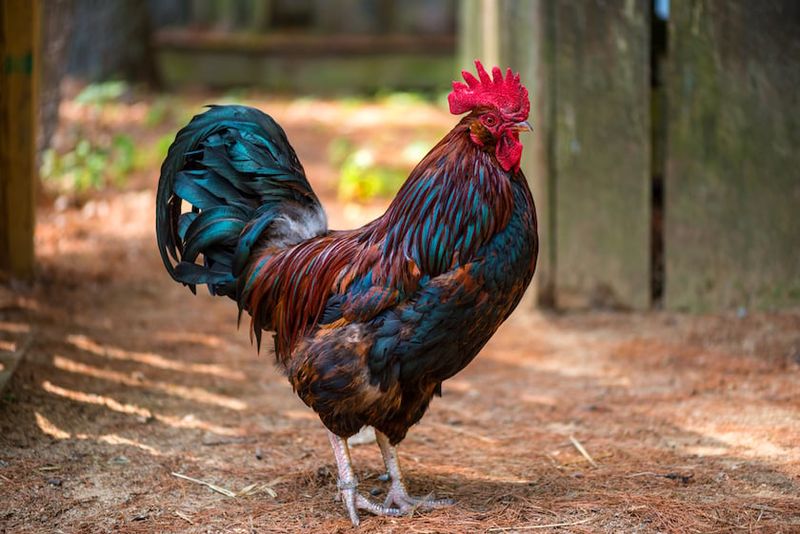
Junglefowl are native to tropical and subtropical Southeast Asia and India. Domestication of poultry was thought to happen at the end of the last Ice Age, approximately 10 thousand years ago, when humans moved from hunter-gatherers to living in stationary settlements. Humans learned, among other things, crop production and domestication of animals.
Interestingly, while food was in relative abundance in these settlements, the transmission of animal diseases to humans became more common—and to this day is still one of the negative trade-offs of animal domestication.
The bird spreads its wings
As noted, geographically the domestication of jungle fowl was centered in modern day China and India due to the post-Ice Age temperate climate in those regions.
By 1500 BCE (Before Current Era), chickens had found their way to Egypt and by 800 BCE to Greece and modern day Iran. This dissemination of poultry was thought to have been done via East-West trade routes across central Asia. Basically, wherever humans went, chickens were brought with and traded.
Chickens were probably easier to transport to far off destinations than other species. For example, when the Germans, Dutch, British, Spanish, and Portuguese colonized many of the Pacific islands, they brought their own poultry. One well-chronicled example is on British explorer Captain James Cook’s second voyage to New Zealand. (For many islands, there were junglefowl already there.)
Many Pacific islands still have wild chickens roaming around to this day.
Durable, tough, and revered
So why the chicken? Other birds make eggs, too. Of the domesticated species, ostriches make the biggest eggs and quail make the smallest. Bones from ring-necked pheasants were found in the same time period and geography as where the junglefowl were.
Likely chickens are like the Toyota Camry of birds: They are typically low maintenance, productive, and tough. The tough part probably explains a lot since chickens can survive in many different climates including extreme heat and cold.
It is also important to recognize that domesticated chickens were not just about food. They were used for ceremonial and religious purposes, and the roosters were also prized for their fighting ability.
There is evidence that humans may have first used fowl for cockfighting as early as 10,000 years ago, but their meat was not enjoyed until later.
From a ceremonial perspective, chickens were considered sacred and there are archeological images in ancient Babylon of priests worshipping chickens.
Chickens were considered sacred in part because they crowed before dawn and then the light appeared…
And now, your neighbor yells at you for that.
Well-bred, and often
While selective breeding techniques of poultry go back to at least the Roman times, many modern breeds originated between 1850 and 1900. This was when a “chicken craze” occurred, somewhat similar to what is occurring now with backyard chickens.
Traits such as plumage color, behavior, and physiological traits related to meat and egg production were refined and further developed.
The end of the second Opium war between England and China (1856-1860) likely contributed to this craze. At that time, many Chinese breeds were introduced to the Western World, which started a breeding craze. Literally hundreds of new breeds were developed during this period of “hen fever.”
Today’s “ordinary” breeds such as White Leghorns and Rhode Island Reds emerged as champion layers during this time.
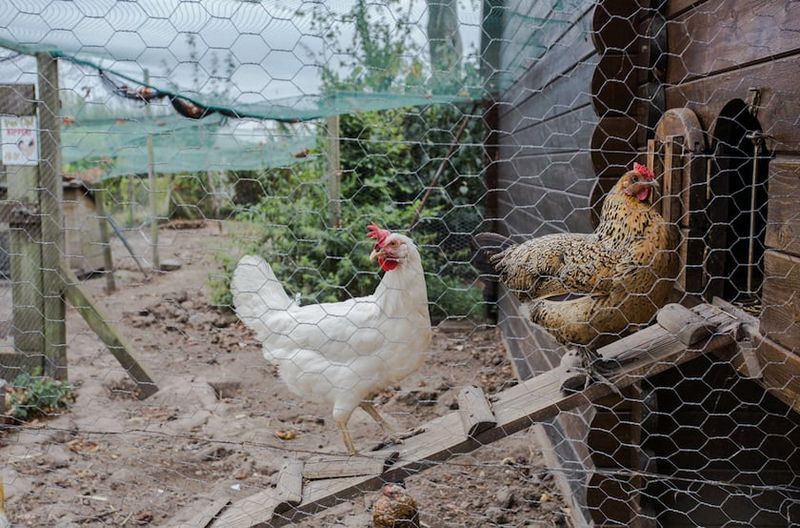
Back to the future?
Where did today’s most valued traits come from? Interestingly, it was probably from domesticated chickens interbreeding with local populations of different junglefowl species.
This probably helped create specific traits that are being replicated today by scientists. The goal of identifying and integrating disease resistance genes from modern day village poultry to conventional strains of commercial poultry will link disease resistance and productivity.
Will the above information make you a better poultry keeper? Maybe not, but hopefully it will make you appreciate how the humble chicken's history is so intertwined with our own human history from the start of civilization to modern times.
Chickens and humans have a unique link in our human history.
Tags:Pitesky's Poultry

Chicken Whisperer is part of the Catalyst Communications Network publication family.










